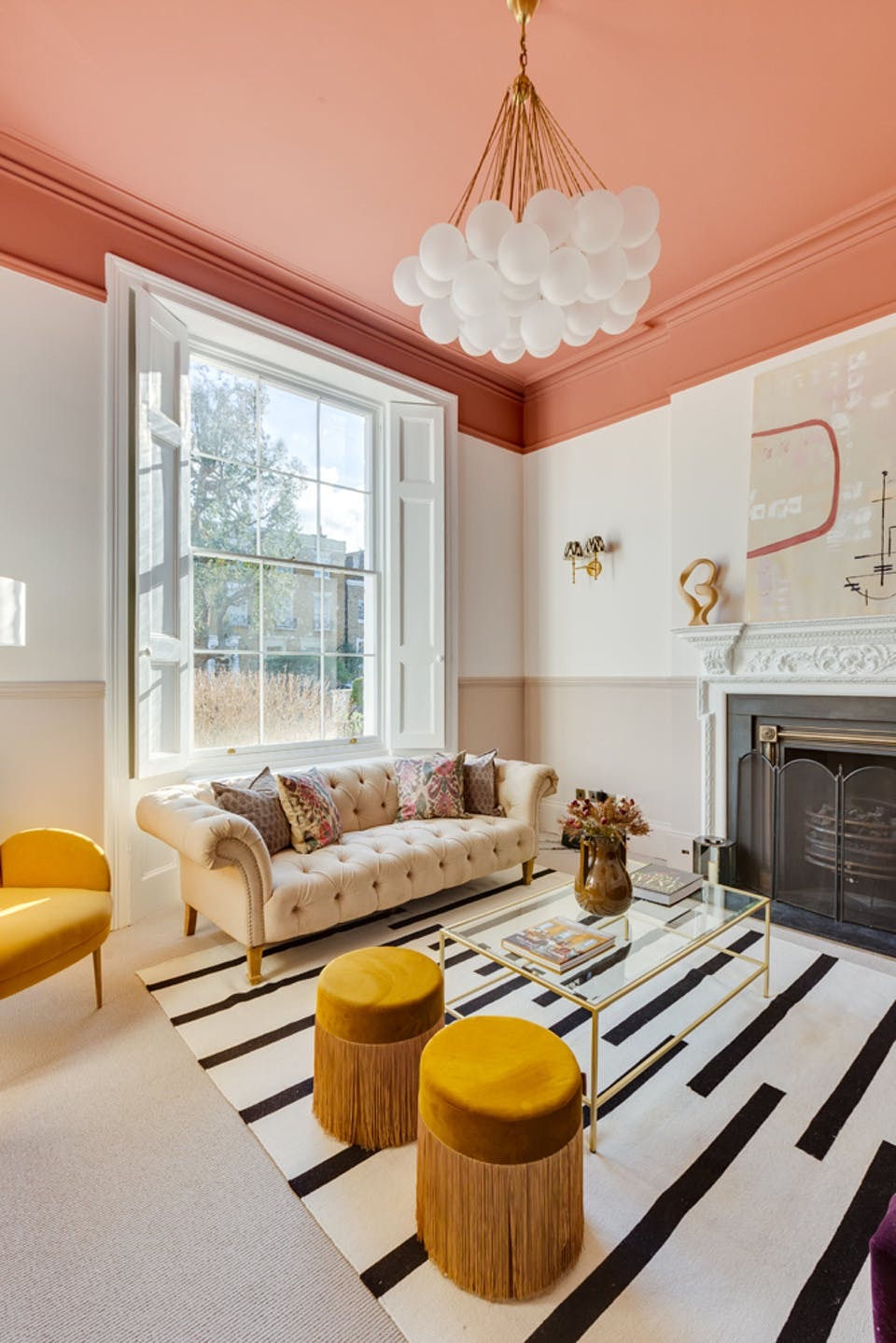Thinking outside the traditional “accent wall”
- Staci Holt

- Oct 24, 2021
- 3 min read
When it comes to paint, there are countless ways to add a splash of color to your home. The one we're all familiar with is the accent wall. It's a classical design solution, but one that seems to finally be phasing out. As design is trending towards bolder use of color, we're also seeing a more intentional use of color: painted accents that relate directly to the scale and context of a home's individual architecture. Below are a handful of my favorite alternatives to the age-old accent wall, as well as some tips and tricks to apply them to your own space. I hope it inspires you!

Source: Douglas Bridge Photography
Two-Toned Color Blocking:
This is a simple yet effective way to add some color to your home: paint the top and bottom of your walls two different colors. The two toned wall is a detail that works in both historic and modern homes. Depending on the colors you choose, it can be stately and traditional or whimsical and playful.

Source: Turnbow Photography
When you're deciding where to draw the dividing line, try to relate it to something else in the room: maybe it's the top of your fireplace, the back of a chair, the height of a railing or half wall. Play around with the proportions of your room to get the feel just right. If you’re unsure of where to draw the line, I’d suggest employing the ratio that’s commonly used for wainscoting: one third in one color, two thirds in another. As a bonus, if you opt for a dark color on the bottom with a light color on the top it will add an illusion of height to your room. For maximum impact, I recommend continuing the upper wall color on to the ceiling as well.

Credit: Brie Williams
For a little extra whimsy you could even add a scallop detail like this nursery wall by Bre Purposed.

Source: Bre Purposed
Painted Ceilings:
For decades we've defaulted to flat white on the ceiling--which is why a pop of color up there is unexpected and exciting. Select a bright, invigorating color for extra playfulness, or a dark, rich color for a cozier mood.

Credit: Haley Mendelsohn
If your home is blessed with nice, tall ceilings (9' or higher), I’d recommend bringing the ceiling color down 18" or so to mimic a traditional picture rail height. Or if you’ve got crown moulding, consider painting that the new ceiling color as well.

Source: Paint Library London
Dynamic Shapes:
If you’re looking to paint a smaller concentration of color than a whole ceiling or the entire perimeter of a room, try a large geometric shape. With just a pint of paint and some painters' tape, you can make a big impact.

Credit: Jessica Helgerson Interior Design
I have always loved the way this triangle of yellow breaks up the space in Erin Barrett of Sunwoven's home. It's a much more dynamic statement than if she had painted the door yellow:

Credit: Sunwoven
When choosing the shape, size, and location carefully consider what this shape will relate to. You might do an arch behind a credenza, a triangle at the entry, a circle behind the couch. See how this thick, bright orange stripe adds a pop and a little definition to this cozy reading corner. I especially like that they continued the color onto the ceiling:

Credit: Michael Garland
Can't decide? Maybe do it all. This entry by Banyan Bridges has a two toned wall AND a cute little corner arch. I love that they even continued the paint on the hardware and trims.

Credit: Banyan Bridges
Whatever you choose: don't be afraid to go big and go bold--it's just paint!

Comments